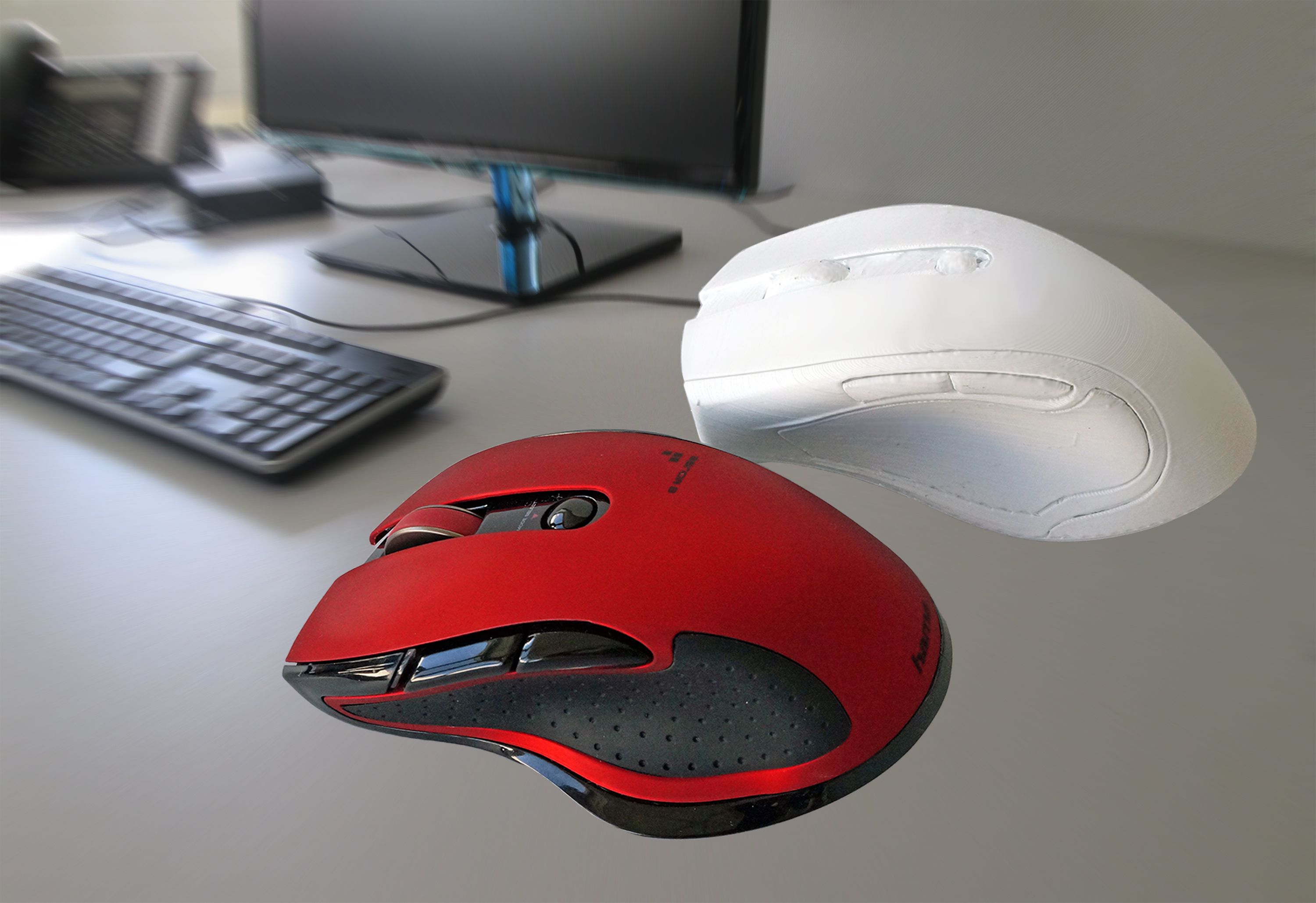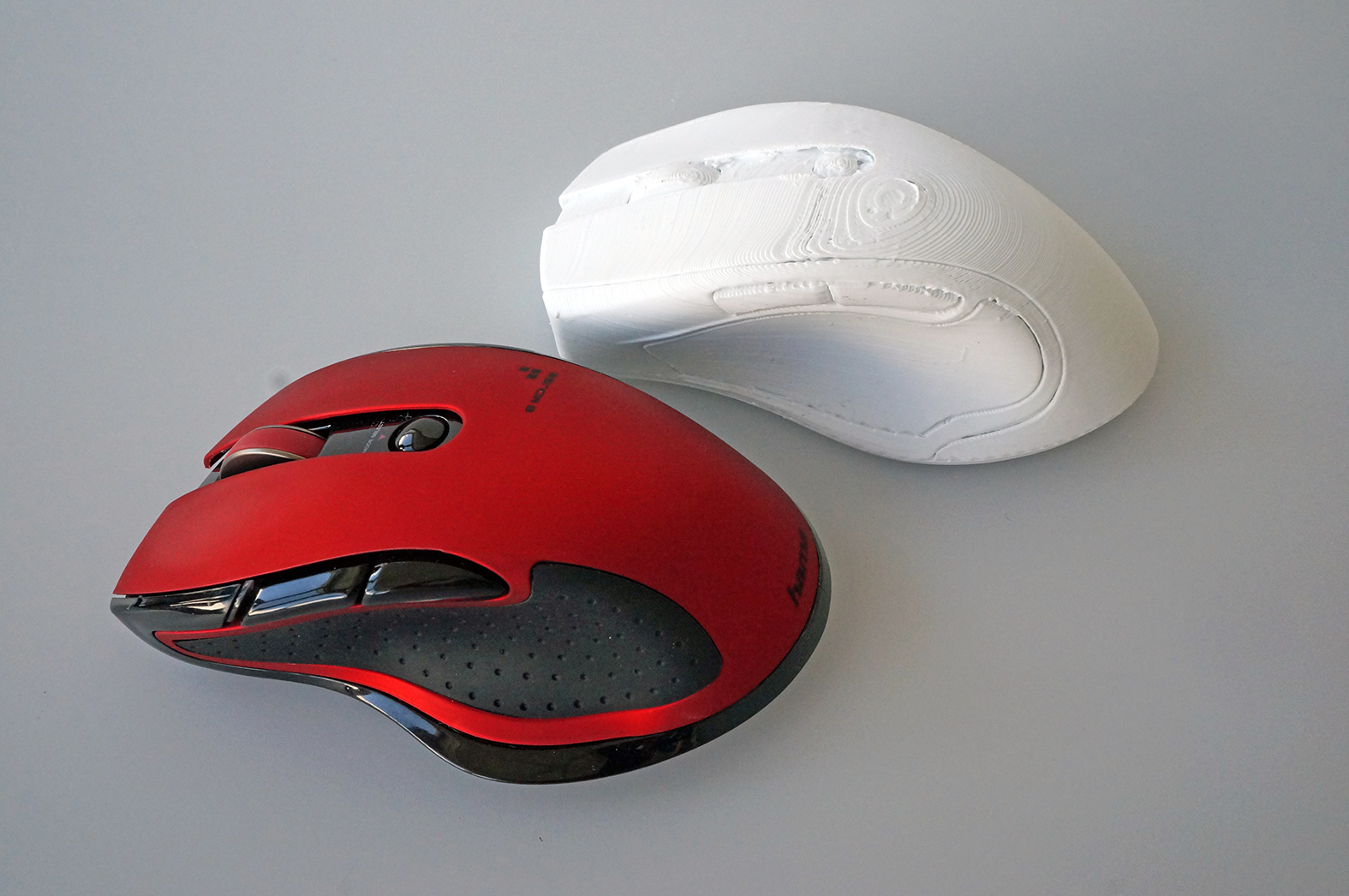Who hasn’t heard of Hama, the accessories specialists from Monheim, Germany? There is hardly an electronic device for which Hama doesn’t have at least one suitable accessory in its range – and available virtually anywhere. The speed at which electronic devices are brought to market also sets the pace at Hama. This also goes for product development, where an X400 3D printer from German RepRap is used to shorten the development times of both the product and the packaging, as well as reduce costs.
Several development stages have to be completed before a finished product can be marketed. One of the first people to hold a new development in their hands is Nils Krietenstein, head of the product design department of the medium-sized company. What only existed days earlier as a CAD drawing, such as a mouse for the computer, appears the next day on the build platform of the X400 3D printer from German RepRap as a printed 3D model.
“Since we’ve been using the 3D printer, product development has been much more efficient,” Krietenstein explains. Computer mice are a good example. The first samples printed in 3D would be used to assess the ergonomics. “Previously, we had to send the data to our production partners in the Far East and wait till the sample was sent back to us. This procedure made any necessary modifications very time consuming. Thanks to the 3D printer we can now complete and assess modifications and adaptions much faster.”
The first mice are produced in white PLA. “This is the best color for assessing the design,” Krietenstein explains the principle behind color selection. Printing is carried out with a 0.4 nozzle and a 0.25 mm layer resolution with the Simplify3D software.
A product face lift normally requires one to two model variants to be produced from the 3D printer for assessment. A new development may require as much as five to ten models until the optimum design in terms of ergonomics, appearance and functionality is found.
Hama product design not only prints computer mice in 3D. Also USB sticks, headphones, timers and much more from its extensive product range – plus the appropriate packaging. “Up to 60% of 3D printer usage is for developing the accessories whilst the remaining 40% is for the packaging prototypes.”
In order to ensure optimum presentation of the products in the packaging, so-called inner trays are produced which hold the product in position in the packaging. The mold for the inner tray prototype likewise comes from the X400 3D printer. This is then polished and given a special coating. Krietenstein: “We then deep draw the foil and thus produce a handful of packaging samples in order for the team to assess them on the simulated sales wall.” This is considerably cheaper and environmentally friendlier than the alternative of cutting a mold for this in aluminum. “This enables us to print up to ten molds, sometimes even more. Should something prove not to be such an optimum design, we can simply print a new deep-draw mold overnight.”
3D printing is also used at Hama for mold construction and product development. For Nils Krietenstein, this is the ideal technology for the first project phase since it is a very inexpensive process. “It’s not only the price of the printer compared to the build platform that is important but also the annual maintenance costs.” These printers offer impressive performance on account on their easy maintenance and inexpensive wear parts. Added to this is the low price for printer material compared to laser sintering equipment. A prototype can be produced here for just a few cents.
The people at Hama are therefore really pleased with their decision to use 3D printing and the X400. Product development is faster and customers can be supplied more quickly with innovative accessories for their cell phones or computers. Only in the final phase is a new product sample sintered or deep-draw mold cut from aluminum.
Subscribe to our Newsletter
3DPresso is a weekly newsletter that links to the most exciting global stories from the 3D printing and additive manufacturing industry.






















